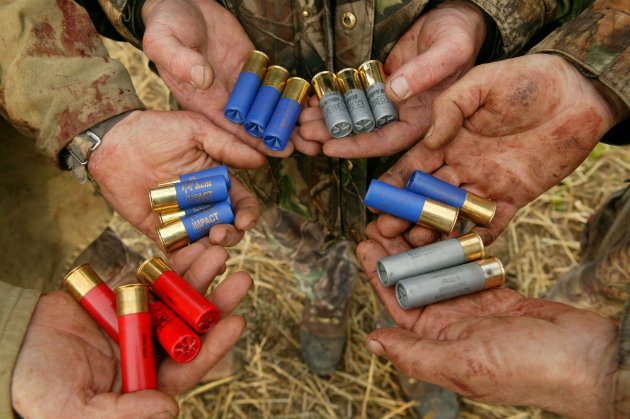7 things you should know about cartridges – myth vs reality
There's a lot of rubbish talked about cartridges

7 things you should know about cartridges – myth vs reality
To be honest, there’s not much to shotgun cartridges – just five components and no moving parts. So not much to go wrong. Thanks to modern manufacturing, malfunctions are rare. But here are some of the myths you might come across in your shooting career.
1. Shotgun cartridges are very expensive
Shooting UK spoke to Josh Burgess of Just Cartridges who said: “In the last three years cartridges haven’t increased that much in price, they’ve probably gone up about £20 per thousand. Three years ago a thousand standard game cartridges would have cost about £320, now the price is in the mid £300’s, depending on the spec.”
The cost of shells hasn’t even kept pace with inflation in the last 20 years. So we’ve had it good for a long time.
In addition, it’s very easy to shop around online these days to buy your cartridges and find yourself the best deal.
2. Fast shotgun cartridges are better
In fact, you get better shot patterns with slower cartridges. For those longer targets, use a mid-range shell with a higher than average antimony content to give you better patterning and harder hitting killing power. You will also get less recoil.
Speed isn’t everything in cartridge choice. Even with the fastest loads, the pellets are travelling at subsonic speeds only 20 feet or so from the muzzle.
Here’s something to think about: For a target crossing at right angles to the shooting position at a speed of 40mph and 30 yards distance, the difference in lead required for two cartridges that performance wise are 100fps apart (say the difference between 1375fps and 1475fps) is less than three inches.
When you think that your total pattern diameter is roughly 30 inches without taking into account the shot string effect, this is so small as to be virtually impossible to detect from the shooter’s point of view.
3. Brass it isn’t
The head of the cartridge may be called ‘the brass’ but it is actually electroplated steel, which is why it rusts. In fact, a cartridge doesn’t need an external brass head at all – it’s just cosmetic.
So what does a big brass head do? Well it adds unnecessary cost but it does look pretty, doesn’t it? Shooters complain about extraction problems, blaming it on the length of the brass whether it be short or long, in equal numbers.
There will always be problems with extraction and it does not necessarily relate to the length of brass, it is usually a particular gun/cartridge combination. Given the differences in tolerance that guns and cartridges are manufactured to, this is hardly surprising.
4. Stored carefully, shotgun cartridges will work for a lifetime
This is true and it’s worth considering where you keep your cartridges as in ideal conditions, they will last and last. This means somewhere not too warm and not too cold (because they will underperform).
After firing your normal cartridge in freezing or damp conditions, take a look up your barrels. You’ll almost certainly see a certain amount of unburnt powder that you wouldn’t spot on a hot summer’s day.
Think of your cartridges like good wine – and store in dry conditions at room temperature. Don’t store them in the airing cupboard or in the garage.
5. Fibre or plastic wads?
Plastic wads give better pattern performance at range and less recoil than fibre variants. They are usually less expensive too. However, fibre wads are eco-friendly and sales continue to outstrip plastic.
In addition many shooting grounds insist on fibre wads these days.
6. Shot size
I know a chap who swears blind he can tell the difference between a shot size 7½ and 8 just by firing them at sporting clays. I know another guy who maintains that his normal shot size 9 won’t break the second clay on station 4 at skeet.
Both of which are total rubbish.
Shot size is a matter of personal choice. Use what you are comfortable with. A miss will rarely be the cartridge’s fault, it is usually down to operator error. Of course you must ensure that the shot size will kill your quarry huamanely. .
7. Your cartridge is likely to be at fault
Statistically mechanical failures are very rare – it’s rare for your cartridge to let you down. If you miss the target or experience a malfunction that is generally due to a gun/cartridge combination or pilot error.
This piece was originally published in 2016 and has been updated.








